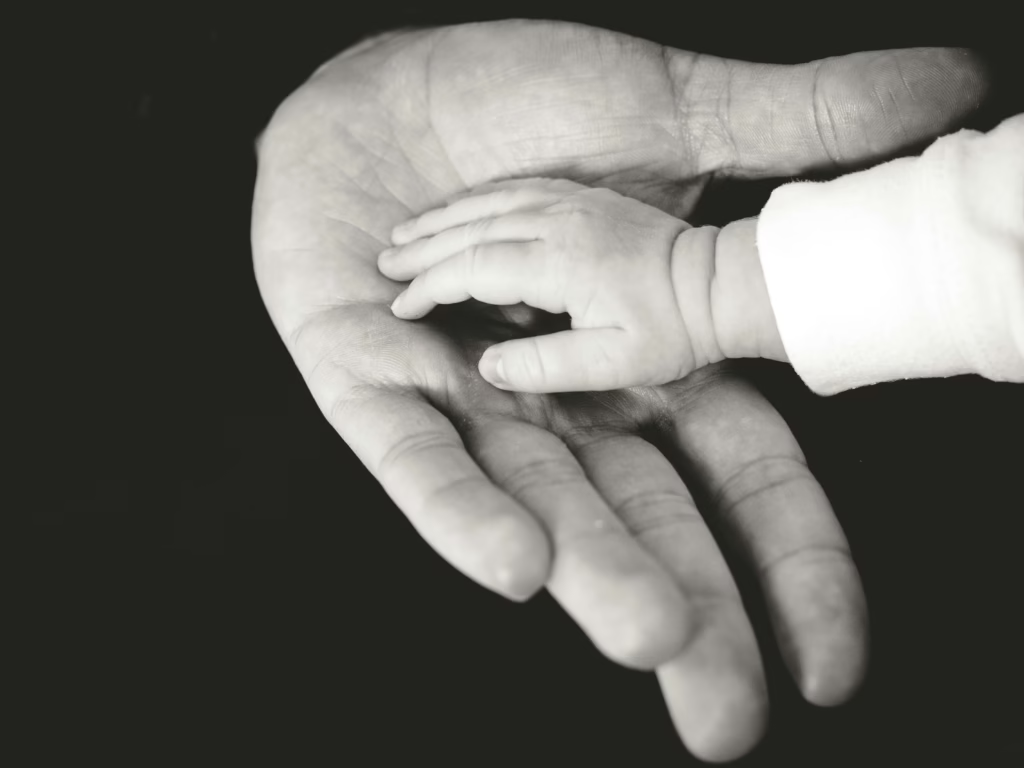Introduction
Did you know that sperm banks in the United States facilitate approximately 30,000-60,000 births each year through donor sperm? The sperm donation process remains a cornerstone of fertility treatments for countless individuals and couples seeking to build their families. Whether you’re considering becoming a donor or you’re exploring sperm donation as a path to parenthood, understanding what really happens during the sperm donation process can help demystify this important fertility option.
In this comprehensive guide, we’ll walk through every step of the sperm donation process, from initial screening to donation day and beyond. We’ll address common questions, dispel myths, and provide practical advice for both donors and recipients navigating this journey.
What Is the Sperm Donation Process?
The sperm donation process refers to the systematic procedure through which men provide their sperm to be used by individuals or couples trying to conceive. This multistep process includes screening, testing, the actual donation, sperm processing, and eventual use in fertility treatments.
Sperm donation isn’t simply about producing a sample—it’s a carefully managed medical and legal process designed to ensure safety for all parties involved while maximizing the chances of successful conception. Fertility clinics and sperm banks follow strict protocols established by organizations like the American Society for Reproductive Medicine (ASRM) and the Food and Drug Administration (FDA).
For many families, the sperm donation process represents a bridge between the desire to have children and the biological reality of their situation. Whether due to male factor infertility, single parenthood by choice, or same-sex relationships, donor sperm offers a pathway to parenthood that wasn’t possible just generations ago.
Why It Matters
The sperm donation process matters on multiple levels. For recipients, it represents hope—the potential beginning of a much-desired family. For donors, it can be both a financial opportunity and a meaningful contribution to others’ lives.
Different family structures benefit from sperm donation in unique ways:
- Heterosexual couples facing male infertility may turn to donor sperm when other fertility treatments aren’t viable options
- Single women can pursue motherhood independently through donor sperm
- LGBTQ+ families, particularly lesbian couples or gay men working with surrogates, rely on sperm donation to create biologically-connected families
- Individuals with genetic concerns may choose donor sperm to prevent passing heritable conditions to their children
The medical community recognizes the sperm donation process as an essential component of reproductive medicine. According to research published in the Fertility and Sterility journal, advancements in sperm cryopreservation and screening have significantly improved success rates over the past decade, making this path to parenthood increasingly reliable.
The Process
The sperm donation process involves several distinct stages, each designed to ensure quality, safety, and legal protection for all parties. Here’s what happens step by step:
Initial Application and Screening
The process begins with an application that typically includes:
- Basic demographic information
- Medical history questionnaire
- Family health history going back several generations
- Educational background and achievements
- Physical characteristics documentation
Most sperm banks accept fewer than 5% of applicants, seeking donors who meet strict health, genetic, and sometimes educational criteria. This initial screening helps identify candidates who meet basic requirements before investing in more expensive testing.
Medical and Genetic Testing
Qualified applicants undergo comprehensive testing that includes:
- Blood tests for infectious diseases including HIV, hepatitis B and C, syphilis, and cytomegalovirus (CMV)
- Genetic carrier screening for conditions like cystic fibrosis, spinal muscular atrophy, and hundreds of other inherited disorders
- Semen analysis to evaluate sperm count, motility, and morphology
- Urine tests for sexually transmitted infections
- Physical examination
- Psychological evaluation
The FDA requires these tests to be repeated every three months while a donor remains active in the program. This rigorous testing regimen makes the sperm donation process one of the most thoroughly screened medical procedures.
The Donation Day Experience
Once accepted into a program, donors typically commit to providing samples 1-3 times per week for at least six months. Here’s what happens on donation day:
- The donor arrives at the facility having abstained from ejaculation for 2-5 days (as instructed)
- The donor provides photo ID and completes a health update form
- Staff direct the donor to a private collection room with materials to facilitate donation
- The donor produces a sample in a sterile container
- The sample is immediately labeled and transferred to the laboratory
Many donors report that facilities make considerable efforts to create comfortable, private environments for sample collection, though the clinical setting can initially feel awkward.
Laboratory Processing
After collection, the sperm donation process continues in the laboratory, where technicians:
- Evaluate the fresh sample for quality metrics
- Wash and prepare the sperm, removing seminal fluid
- Add cryoprotectant solution to protect sperm cells during freezing
- Divide the sample into multiple vials
- Freeze the vials in liquid nitrogen at -196°C (-321°F)
- Quarantine samples until follow-up testing confirms continued health of the donor
Only after the donor returns for follow-up testing (typically after 6 months) and again tests negative for infectious diseases will the sperm be released from quarantine and made available to recipients.
Benefits and Considerations
For Donors
The sperm donation process offers several benefits to donors:
- Financial compensation: Donors typically receive $100-150 per accepted sample
- Free comprehensive health screening: Donors receive medical information that might otherwise be costly to obtain
- Genetic legacy: For some, knowing they’ve helped create families is personally meaningful
However, donors should consider several factors before committing:
- Time commitment: Regular donations for 6+ months requires scheduling flexibility
- Privacy concerns: Though anonymous donation is possible, advancements in consumer genetic testing make complete anonymity increasingly difficult to guarantee
- Emotional implications: Donors must be comfortable with the possibility of genetic offspring they may never meet
- Future contact: Many sperm banks now offer identity-release programs where offspring can contact donors after turning 18
For Recipients
Recipients benefit from the sperm donation process in several ways:
- Access to parenthood: Donor sperm makes conception possible for many who couldn’t otherwise have biologically-connected children
- Extensive screening: Commercial donors undergo more rigorous testing than typically occurs in known-donor arrangements
- Choice: Recipients can select donors based on numerous characteristics
Considerations for recipients include:
- Cost: Sperm typically costs $900-1,000 per vial, with multiple vials often needed
- Limited supply: Popular donors may sell out quickly
- Emotional processing: Recipients may need time to adjust to using donor gametes
- Disclosure decisions: Families must consider how and when to share origins with their children
Research published by the CDC indicates that pregnancy success rates using donor sperm through intrauterine insemination (IUI) range from 10-15% per cycle, while IVF with donor sperm can reach success rates of 40-50% per embryo transfer, depending on the recipient’s age and other factors.
Common Misconceptions
The sperm donation process is surrounded by numerous myths. Let’s address some common misconceptions:
Myth 1: Anyone can be a sperm donor
Reality: Sperm banks typically accept fewer than 5% of applicants. Height requirements (usually 5’8″ or taller), age restrictions (typically 18-39), education requirements (often requiring some college education), and extensive health screenings eliminate the vast majority of potential donors.
Myth 2: Donors have legal parental obligations
Reality: When donation occurs through licensed sperm banks, donors are protected from legal parental responsibilities through carefully crafted contracts and legal frameworks. However, informal donations without proper legal documentation can result in complicated legal situations regarding parental rights and responsibilities.
Myth 3: Donation is a quick, easy way to make money
Reality: The sperm donation process requires significant commitment. Donors must abstain from ejaculation for 2-5 days before each donation, maintain consistent availability for 6+ months, comply with lifestyle restrictions (including limitations on alcohol, drug use, and high-temperature environments like hot tubs), and undergo regular testing.
Myth 4: Anonymous donation guarantees lifelong anonymity
Reality: While sperm banks offer anonymous donation options, the rise of direct-to-consumer genetic testing services like 23andMe and Ancestry.com has made complete anonymity increasingly difficult to maintain. Donor-conceived individuals can often identify biological relatives (and potentially donors) through these services.
Legal and Ethical Aspects
The sperm donation process operates within complex legal frameworks that vary significantly by location:
In the United States, sperm donors working through licensed banks are generally protected from parental rights and responsibilities, though laws vary by state. The FDA regulates sperm donation as a tissue donation, requiring specific screening protocols.
Internationally, regulations differ dramatically. For example:
- The UK prohibits anonymous donation entirely
- Sweden limits each donor to creating children in 6 different families
- China allows only married couples to access donor sperm
- Canada prohibits payment for sperm donation beyond expense reimbursement
Ethical considerations in the sperm donation process include:
- Donor limits: How many children should one donor be permitted to produce?
- Anonymity rights: Do children have a right to know their genetic origins?
- Compensation ethics: Does payment constitute selling genetic material or fair compensation for time and effort?
- Information disclosure: What information about donors should recipients receive?
Organizations like the American Society for Reproductive Medicine provide ethical guidelines, recommending limits of 25 children per donor in a population of 800,000, though enforcement mechanisms remain limited.
Support and Resources
Navigating the sperm donation process can be emotionally complex. Fortunately, numerous resources exist to support both donors and recipients:
For Donors
- Donor Sibling Registry connects donors with genetic offspring when both parties consent
- Private Facebook groups for sperm donors provide community and shared experiences
- Most sperm banks offer counseling services to donors considering or participating in their programs
For Recipients
- RESOLVE: The National Infertility Association offers support groups and resources
- Family Equality Council provides resources specifically for LGBTQ+ families
- Books like “Let Me Explain: A Story About Donor Insemination” help parents explain donor conception to children
- Single Mothers by Choice (SMC) organizations offer community for those pursuing parenthood independently
Reputable sperm banks in the United States include:
- California Cryobank
- Seattle Sperm Bank
- Fairfax Cryobank
- Xytex Sperm Bank
- The Sperm Bank of California (a non-profit option)
Many fertility clinics also maintain relationships with these banks, facilitating the coordination between sperm acquisition and fertility treatment.
Conclusion
The sperm donation process represents a remarkable intersection of medical science, personal choice, and family-building. From rigorous screening to careful legal frameworks, each aspect of the process is designed to create positive outcomes for donors, recipients, and the children born through these arrangements.
Whether you’re considering becoming a donor or utilizing donor sperm to build your family, understanding the comprehensive nature of the sperm donation process helps set realistic expectations and make informed decisions. While the process involves significant commitment from donors and careful consideration from recipients, the end result—helping create families that might not otherwise exist—remains a profound contribution to many lives.
If you’re considering taking the next step in your sperm donation journey, reach out to a reputable sperm bank or fertility clinic to discuss your specific situation and options. Remember that each journey is unique, and the right path is the one that feels appropriate for your circumstances, values, and goals.
Frequently Asked Questions
How much do sperm donors typically get paid?
Sperm donors in the United States typically receive $100-150 per accepted sample. Given the frequency of donation (1-3 times weekly) and common contract lengths (6+ months), successful donors can earn $4,000-12,000 during their participation in a sperm donation program. However, compensation varies by location and sperm bank policies.
Can I donate sperm if I've had a vasectomy?
No, men who have had vasectomies cannot participate in the sperm donation process as commercial donors. Sperm banks require viable sperm that can be collected through ejaculation. However, men can bank their own sperm before undergoing vasectomy for personal use in the future.
How long does the entire sperm donation process take from application to acceptance?
The screening portion of the sperm donation process typically takes 4-8 weeks from initial application to acceptance as an active donor. This includes multiple appointments for interviews, physical examinations, genetic and infectious disease testing, and semen analysis. After acceptance, donors typically commit to a minimum 6-month donation period.
What percentage of sperm donation applicants get accepted?
Most sperm banks accept only 1-5% of applicants who begin the sperm donation process. The stringent requirements for health history, genetic screening, sperm quality, physical characteristics, and commitment level eliminate the vast majority of potential donors before they complete the screening process.
Can recipients choose specific characteristics in sperm donors?
Yes, recipients typically have access to extensive information about donors during the sperm selection process. Depending on the sperm bank, this information may include physical characteristics, ethnicity, education, hobbies, childhood photos, voice recordings, staff impressions, medical history, and even personality assessments. Many banks offer search filters to match donors with specific desired traits.







